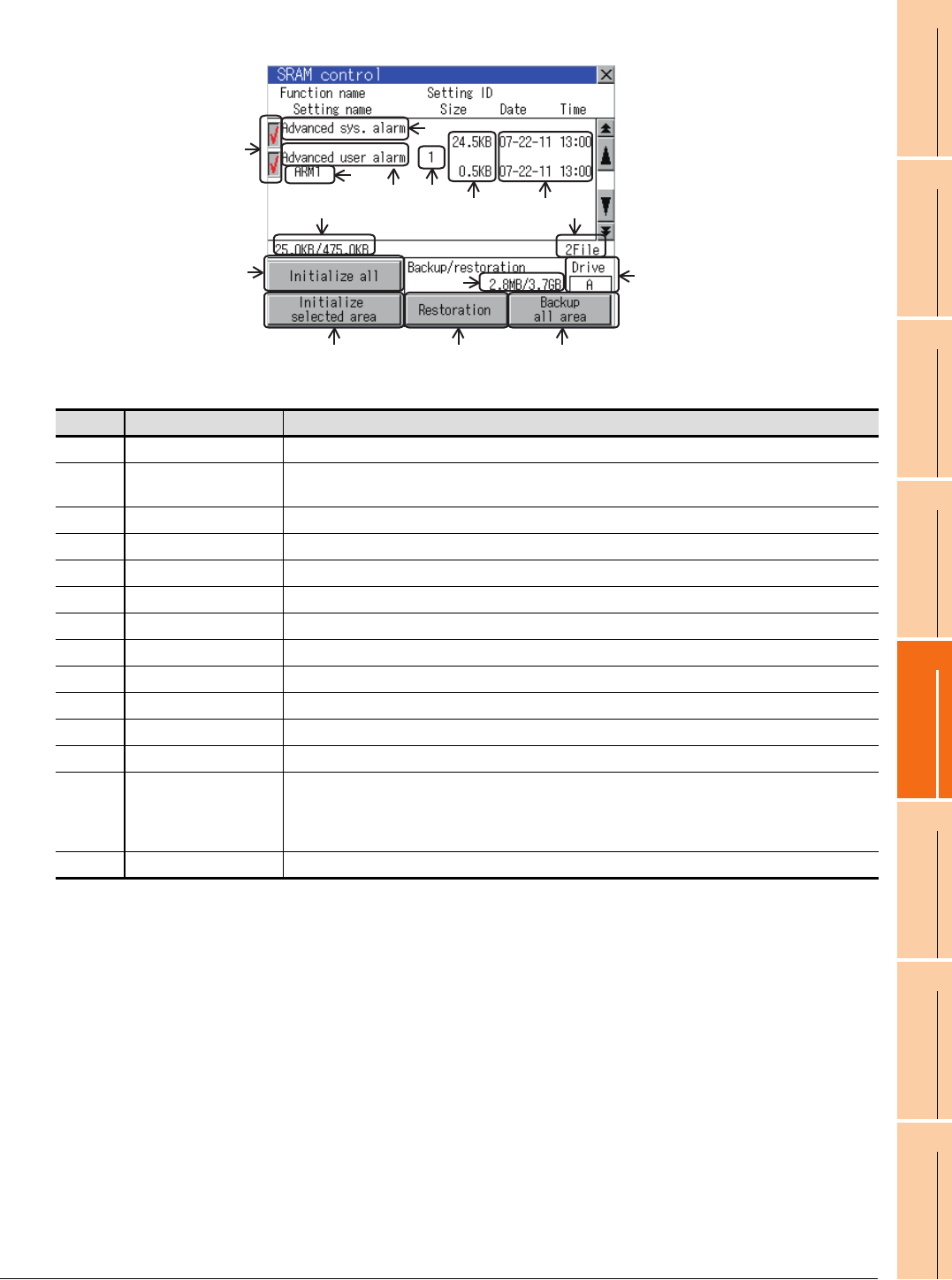
13. FILE DISPLAY AND COPY (PROGRAM/DATA CONTROL)
13.2 Various Data Control
13 - 69
9
UTILITY FUNCTION
10
COMMUNICATION
INTERFACE SETTING
(COMMUNICATION SETTING)
11
DISPLAY AND
OPERATION SETTINGS
(GOT SET UP)
12
CLOCK SETTINGS AND
BATTERY STATUS DISPLAY
(TIME SETTING AND DISPLAY)
13
FILE DISPLAY AND
COPY (PROGRAM/DATA
CONTROL)
14
GOT SELF CHECK
(DEBUG AND SELF
CHECK)
15
CLEANING DISPLAY
SECTION (CLEAN)
16
INSTALLATION OF
COREOS, BOOTOS
AND STANDARD
Display example of SRAM control
Number Item Description
(1) Check box Touch the check box to select or clear the item.
(2) Function name
Displays the used functions in the order of the advanced system alarm, advanced user alarm, and logging
function.
(3) Setting ID Displays the setting IDs. The setting IDs of the advanced system alarm are not displayed.
(4) Size Displays the data size.
(5) Setting name Displays the setting name. For the setting name, only characters within the display range are displayed.
(6) Date and time Displays the creation date and time of each data.
(7) Number of selected files Displays the information of the items currently selected.
(8) SRAM area Displays the current free space size or total size of the SRAM user area.
(9) Drive space Displays the current free space size or total size of the drive selected for [Select drive].
(10) Initialize all Initializes all areas of the SRAM user area.
(11) Initialize selected area Select each area of the SRAM user area to initialize multiple areas of the SRAM user area.
(12) Select drive Switches drives to be used for the data backup or restoration in the SRAM user area.
(13) Restoration
Saves the data in the selected drive to SRAM user area.
The following drives can be switched only when a SD card or USB memory is installed.
• SD card: [A: Built-in SD card]
• USB memory: [E: USB drive]
(14) Backup all area Saves data in the SRAM user area to the selected drive.
(1)
(2)
(5)
(3)(2)
(10)
(9)
(4)
(14)(13)
(6)
(7)
(8)
(11)
(12)


















